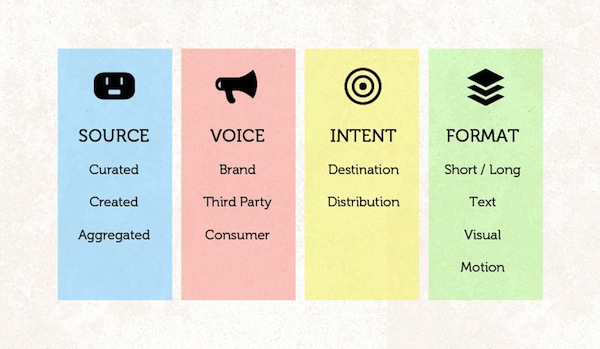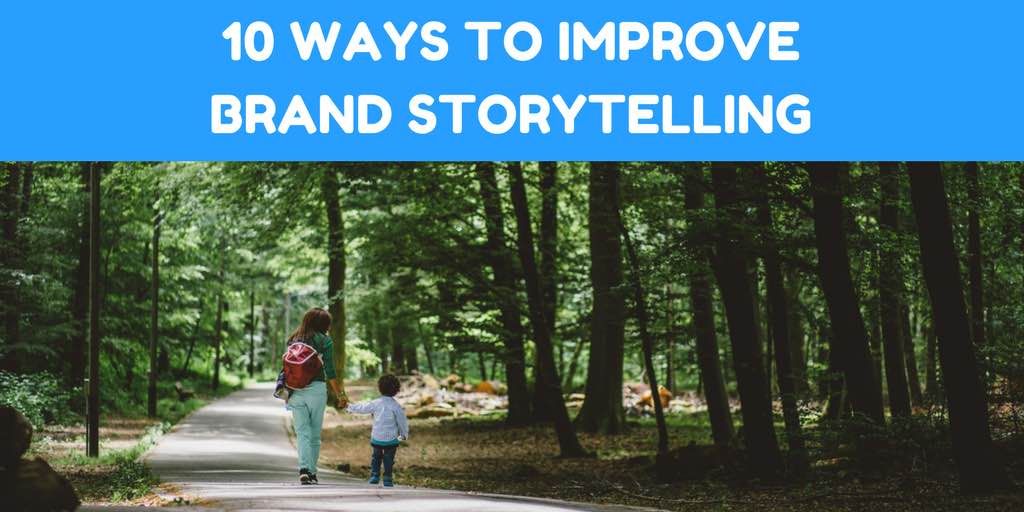The main purpose of any well-crafted brand story is to invoke an emotional response. It’s how brands connect with prospects and consumers on a personal level. Brand storytelling is the process of humanizing a brand. So, to improve brand storytelling, you need to show you humanity and authenticity.
In fact, famous brands like Starbucks, Louis Vuitton, Amazon and Gucci, all have amazing stories at their core. A brand story can greatly enhance the interest and engagement between a company and its customers.
It can provide your business with a strong and lasting competitive edge over others.
Your story is the emotional reason why people should buy from you. This is why a great brand story will almost always beat price every time.
People spend hundreds or thousands of dollars buying Gucci products because of the story that they’ve told themselves. So, for a winning marketing strategy, tell a story.
In fact, famous brands like Starbucks, Louis Vuitton, Amazon and Gucci, all have amazing stories at their core. A brand story can greatly enhance the interest and engagement between a company and its customers.
It can provide your business with a strong and lasting competitive edge over others.
Your story is the emotional reason why people should buy from you. This is why a great brand story will almost always beat price every time.
People spend hundreds or thousands of dollars buying Gucci products because of the story that they’ve told themselves. So, for a winning marketing strategy, tell a story.
How to Improve Storytelling for Your Brand?
Firstly, know that it’s your story.As the founder of your organization, your brand story is essentially a derivative of you. This one understanding can help you craft a story that’ll resonate with your customers.
To improve brand storytelling, it’s a good idea to be prepared just like you would if you were writing an article or eBook.
So how do you prepare to tell your story?
You may want to gather all relevant information about how you started your company but here’s the thing…
It’s better to pick up a piece of paper, brain vomit on the page and edit later, that’s the hack!
Having a content plan is key to tell your brand story! Make sure that you keep writing until there’s nothing left to tell about your story. You really shouldn’t skip this step.
Once done, use the following tips to make your story compelling.

#1 Know Your Audience
Knowing who you want to target is the 1st step of brand storytelling. You need to know who your ideal customers are. You can use persona exercises to do this. A persona is a fictional representation of your ideal customers.
If you’ve already got some customers, try to use any data that you have on them as a base for creating personas. It’s a good idea to have at least three ideal customer types.
But how do you even start creating personas?
You need to know how to ask the right questions. Similar to a survey, you’ll need to answer several questions but you’re also going to need research data. You can collect data directly from existing customers too.
Your questions should be focused on 7 main areas and these are:
1. Role or job titles – Potential day-to-day work activities, knowledge and skills required for their role.
2. Goals – Responsibilities and priorities.
3. Challenges – Biggest challenges and how to overcome them.
4. Company – Industry and organization size.
5. Watering holes – How and where they go to consume information.
6. Personal background – Personal notes like age, education level and family status.
7. Shopping Preferences – Do they search for products online or visit a store? Also, communication preferences such as email, phone or text messaging should be included.
If you’ve already got some customers, try to use any data that you have on them as a base for creating personas. It’s a good idea to have at least three ideal customer types.
But how do you even start creating personas?
You need to know how to ask the right questions. Similar to a survey, you’ll need to answer several questions but you’re also going to need research data. You can collect data directly from existing customers too.
Your questions should be focused on 7 main areas and these are:
1. Role or job titles – Potential day-to-day work activities, knowledge and skills required for their role.
2. Goals – Responsibilities and priorities.
3. Challenges – Biggest challenges and how to overcome them.
4. Company – Industry and organization size.
5. Watering holes – How and where they go to consume information.
6. Personal background – Personal notes like age, education level and family status.
7. Shopping Preferences – Do they search for products online or visit a store? Also, communication preferences such as email, phone or text messaging should be included.
#2 Know Your Objective
Storytelling is a growth marketing strategy you should implement for your online business. What do you want the person to feel after they interact with your story? Decide on a specific emotional response as the end result such as courage, trust, sadness or joy.
For example, a viewer can feel happy or courageous at the end of your story.
Your objective should be influenced by your business goals or vision. Are you trying to sell toys, clothes, shoes or books? Draft your story in a way that encourages the action you want people to take.
For example, a viewer can feel happy or courageous at the end of your story.
Your objective should be influenced by your business goals or vision. Are you trying to sell toys, clothes, shoes or books? Draft your story in a way that encourages the action you want people to take.

#3 Have a Sharable Title
Nowadays, people tend to share things such as blog posts and tweets just by looking at the title. That’s because, for the most part, people scan web pages but they don’t necessarily read all the time.
Make sure that your title is enticing enough to attract attention, likable and descriptive enough to share instantly.
Make sure that your title is enticing enough to attract attention, likable and descriptive enough to share instantly.
#4 Approach With Authenticity
Being authentic is key to build a successful brand. Authenticity is important because it can greatly increase the feeling of trust perceived by your audience. If people like and trust you, they’ll buy from you.
So be truthful and don’t be afraid to embrace the underdog status if you’re a new business. This is really the keyword to improve brand storytelling for your business: be authentic! Actually, being authentic is one of the top lessons businesses can learn from Ryan Reynolds.
So be truthful and don’t be afraid to embrace the underdog status if you’re a new business. This is really the keyword to improve brand storytelling for your business: be authentic! Actually, being authentic is one of the top lessons businesses can learn from Ryan Reynolds.

#5 Set The Stage With a Powerful Introduction
Why should people care about reading your story? A good introduction sets the stage with a promise of more and lets the audiences know why they should even care.
This is where you excite your viewers enough to keep paying attention. An exciting intro is the first step to build a compelling storytelling framework that resonates with your target audience and shouldn't be neglected. Without a powerful one, people will probably not go further.
This is where you excite your viewers enough to keep paying attention. An exciting intro is the first step to build a compelling storytelling framework that resonates with your target audience and shouldn't be neglected. Without a powerful one, people will probably not go further.
#6 Make the Customer “The Star”
By now, most marketers have already realized that the best way to sell is to make it about the customer. So if possible, make your customers the star of your story and make them feel good about retelling it.
To improve brand storytelling, making your customer the star or the hero is the way to go. Show a case study on how your product or service helped your customers. If you are able to show how your client went from 0 to 1, you already succeeded.
To improve brand storytelling, making your customer the star or the hero is the way to go. Show a case study on how your product or service helped your customers. If you are able to show how your client went from 0 to 1, you already succeeded.

#7 Share Encouraging Incidents
It’s always a good idea to share specific moments like a particular experience in your story to encourage the audience. These moments will add further weight and context to your brand story.
For example, you can share the past struggles and failures that ultimately lead to your decision to start a company.
For example, you can share the past struggles and failures that ultimately lead to your decision to start a company.
#8 Share The Shift
This is when you decided to alter course. The main event that is responsible for your decision to find a solution to the problem. Ideally, this should also be the problem that your customers want to solve.
#9 The Solution
This is where you reflect on the problem and highlight the solution, including why your product is perfect for solving this problem.
#10 Share Your Story With the Best Mediums
Use your “about us” web page, social media pages and other applicable mediums to tell your story.
For example:
For a younger generation or demographic, you may use Snapchat or Instagram. For an older crowd, Facebook might be a better choice.
Adopt a tone of voice that is best suited for the kinds of customers you’re looking for. Your brand story needs to be memorable and sincere. Ensure that you’re focusing on being authentic and drawing out an emotional response.
Finally, the emotion of pity, fear and relief can make a story very powerful. Another way to look at it is suffering (pity), struggle (fear) and overcoming (relief).
With the right social media strategy, you'll be able to build and maintain a strong brand identity.
For example:
For a younger generation or demographic, you may use Snapchat or Instagram. For an older crowd, Facebook might be a better choice.
Adopt a tone of voice that is best suited for the kinds of customers you’re looking for. Your brand story needs to be memorable and sincere. Ensure that you’re focusing on being authentic and drawing out an emotional response.
Finally, the emotion of pity, fear and relief can make a story very powerful. Another way to look at it is suffering (pity), struggle (fear) and overcoming (relief).
With the right social media strategy, you'll be able to build and maintain a strong brand identity.
So, How to improve brand storytelling for your business?
First, it's important to know that it's crucial to know your target audience for a powerful branding strategy. You cannot do anything without it. Why? Because by knowing your target audience, you will know and understand what kind of story they are looking for. Also, by knowing well your target audience, you will know the tone to use when telling your story.After that, you need to know the objective of your brand storytelling: is it to improve your branding, get leads, make sales, etc... The best tip I can give you if you want to improve your brand storytelling is to stay authentic. People love brands that are authentic and genuine.
At Growth Hackers, we improve brand storytelling of startups and businesses from all around the world. Indeed, we offer branding services as well as content marketing, social media management and much more. Contact Growth Hackers if you want to improve your brand!





1 Comment
Hello, wonderful article here – ??? – very well articulated and thorough. It very much inspired me as well as reminded me of some recent inspiration I found from an online S.M.M. Course I very much enjoyed.